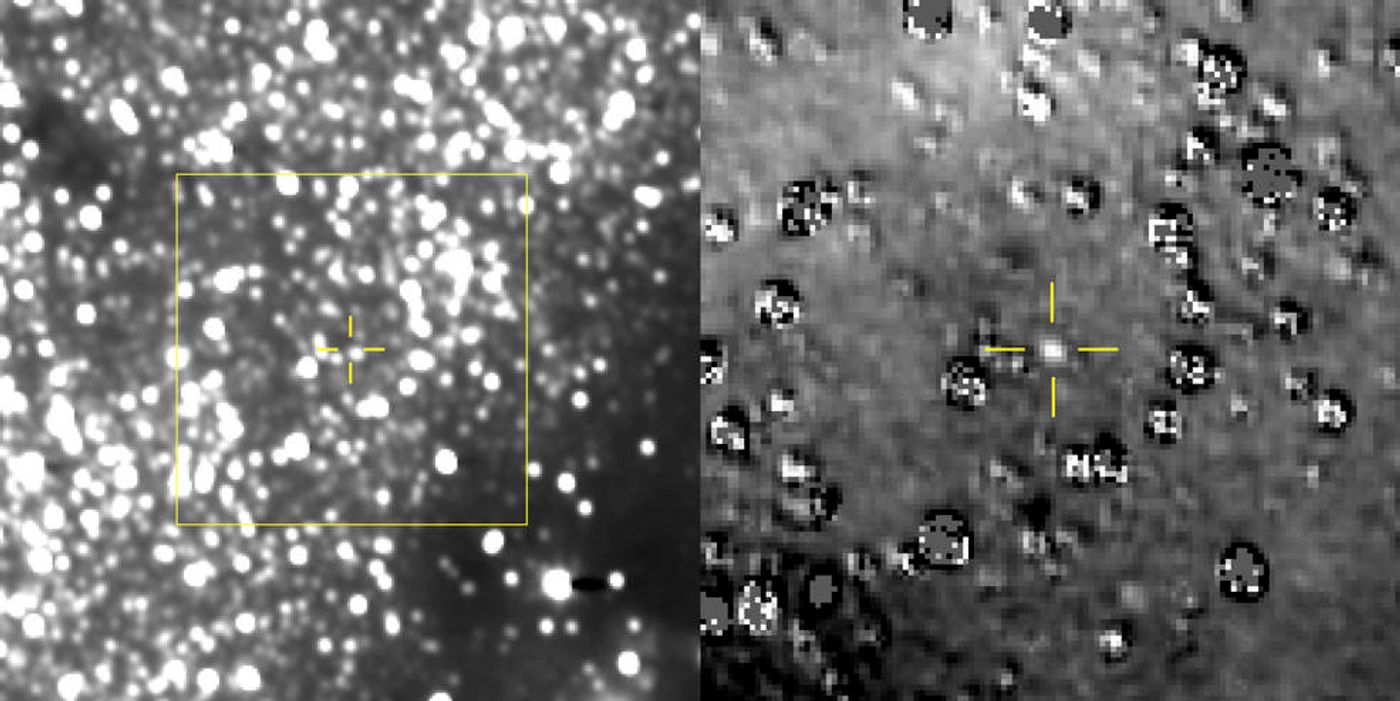New Horizons Spacecraft Photographs its Next Flyby Target
Immediately following New Horizons’ historic Pluto fly-by in 2015, NASA began planning the spacecraft’s next fly-by mission. The space agency ultimately designated an icy Kuiper Belt Object (KBO) known as 2014 MU69 for this mission, which has since been renamed to Ultima Thule.
New Horizons isn’t expected to reach Ultima Thule until New Year’s Day in 2019, but even from a staggering 100 million miles away, the spacecraft’s Long-Range Reconnaissance Imager (LORRI) managed to capture a noisy photograph of its upcoming target.
Image Credit: NASA/JHUAPL/SwRI
NASA shared the photograph in a public statement this week, noting that was taken on August 16th. After capturing the image, New Horizons beamed it back to Earth’s Deep Space Network so that scientists could analyze it.
You can easily discern Ultima Thule in the photograph, which is rather astonishing considering the lack of light in the Kuiper Belt and the sheer number of other objects that could have obscured the view.
“The image field is extremely rich with background stars, which makes it difficult to detect faint objects,” said New Horizons project scientist Hal Weaver.
“It really is like finding a needle in a haystack. In these first images, Ultima appears only as a bump on the side of a background star that’s roughly 17 times brighter, but Ultima will be getting brighter – and easier to see – as the spacecraft gets closer.”
Related: New Horizons spacecraft wakes up from a low-power state to prepare for an upcoming KBO encounter
While it may not look like much, this photograph is actually rather vital to the mission. It and any others captured henceforth will help mission engineers refine New Horizons’ trajectory and ensure that it conducts the closest fly-by of Ultra Thule that it can. After all, the closer we get, the better the observation data will be.
“Our team worked hard to determine if Ultima was detected by LORRI at such a great distance, and the result is a clear yes,” added New Horizons Principal Investigator Alan Stern.
“We now have Ultima in our sights from much farther out than once thought possible. We are on Ultima’s doorstep, and an amazing exploration awaits!"
New Horizons set a record when it seized fantastic views of Pluto’s surface in 2015, and it will set another when it gets up close and personal with a Kuiper Belt Object. No spacecraft has ever gotten so close to one, so you can probably imagine why astronomers are currently foaming at the mouth for the data New Horizons promises to provide in coming months.
NASA will surely share additional photographs as New Horizons approaches Ultima Thule, so stay tuned.
Source: NASA









